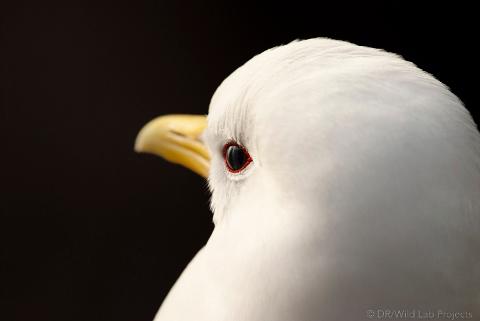NOK 1100
Per PersonThe black-legged kittiwake ...
... is in danger of extinction. In the wild, kittiwakes breed on cliffs. But “the wild” is changing fast, too fast for the kittiwakes. As a result, some kittiwakes find refuge in town, where predation is low. It turns out that buildings look like cliffs through the eye of a kittiwake! But here, their presence sometimes generates conflicts.
This citizen science project aims to educate and change the way people look at kittiwakes, with the empathy they deserve.
The observations we make together are shared with our partner the Norwegian institute for nature research (NINA). They are used to anticipate conflicts, monitor the kittiwake population, and provide better alternative breeding sites to the kittiwakes.
Where: Tromsø city center
When: February-September
Duration: 2 hours
Two meeting times a day: 10:00 and 13:00 in the city center (outside Prostneset)
Group size: 10 max
Difficulty: 2-km city-walk, on asphalt.
Goal of the project: Promote coexistence with kittiwakes.
Actions: Map an monitor the nests on the buildings and on the kittiwake hotels.
Our research partner: Norsk Institutt for Naturforskning/NINA (Norwegian institute for nature research)
What are the goals of the project?
- Promote coexistence with kittiwakes through science and public engagement.
- Map and monitor the nests in town and prevent or solve potential conflicts.
- Keep track of the birds' activity on the kittiwake hotels.
Why is this project important?
The black-legged kittiwake is a red-listed species of seagull. In Norway, the monitoring programs have been showing a population decline between 50% and 100% - depending on the colonies - since the late 1980s. The largest kittiwake-colony, Syltefjordstauran in Finnmark, which hosted 300 000 kittiwakes is almost extinct. The situation is such that the species is now listed as endangered (EN) in the country.
Why is the kittiwake doing so bad? Because of large environmental changes causing long-term breeding failure. Our never-ending extractive activities have made the world unfavorable to the kittiwake: too warm, too contaminated and not enough food, among other things. The bird flu that hit Northern Norway in summer 2023 didn't help.
Kittiwakes are gregarious birds: they find safety in numbers. When the individuals forming a colony are already in a poor condition, any additional stress can trigger a collapse of the colony. In some colonies, predation by white-tailed eagles was the last straw. What was tolerable before is not anymore, and kittiwakes abandon their cliffs.
Some kittiwakes have found a way to cope with this last straw: they use Tromsø as a refuge. Buildings look like cliffs through the eye of a kittiwake. But this intrusion of nature in our urban spaces is not welcomed by everyone. Kittiwakes are often mistaken with the herring gull, several times heavier, which roams the streets looking for leftovers. Yet, kittiwakes do not care about our waste: they exclusively forage live prey, at sea. But ignorance leads to rejection, and some inhabitants wish to get rid of the kittiwakes, by all means.
To keep the kittiwakes away, nets, spikes and slanting boards have started decorating the few buildings kittiwakes had picked as their new home. Often, it made things worse: the former colonies broke apart, and the dislodged kittiwakes spread to neighboringh buildings…
We must find practical solutions that are acceptable to us humans and adequate for the kittiwakes. The birds are true climate change refugees. Other cities in Europe, like Newcastle, UK, are showing ways to coexist. Let’s make Tromsø an example too. The timing is great: the municipality is currently planning the construction of a new neighborhood, precisely where the kittiwakes have settled down. Will we welcome the kittiwakes in our future urban spaces?
How you can contribute
We start in the city center
Together, we follow a route that goes through the city center to count breeding pairs and map new nests. We will look at how kittiwakes respond to deterrents. You will see Tromsø from a very different perspective, and surely, you will look at seagulls in a whole new way.
Then, the kittiwake hotels
These hotels are alternative breeding sites for the kittiwakes breeding in town. Together, we will observe the nests and record the breeding status, the number of chicks and read the rings, just a few meters from the nests.
What happens next?
The success of this project depends on the contribution of volunteers. There would simply be no citizen science without citizen scientists. And this leaves Wild Lab with a responsibility: to keep the volunteers informed. Welcoming the kittiwakes in our urban spaces is a long-term challenge. Wild Lab will keep advocating a peaceful coexistence between kittiwakes and people. Your observations are shared with our research partner, who will eventually publish the result of their work in various media. Wild Lab makes sure that these results reach you. You will appreciate seeing that your contribution has been productive. As for us, reporting is a way to maintain a connection with you, to keep raising awareness and to maintain a community of nature advocates. Tromsø needs them, and there are other places in the world where coexistence between beings is a challenge.
https://wildlabprojects.org/terms-conditions/
https://www.wanderingowl.com/terms-conditions/

